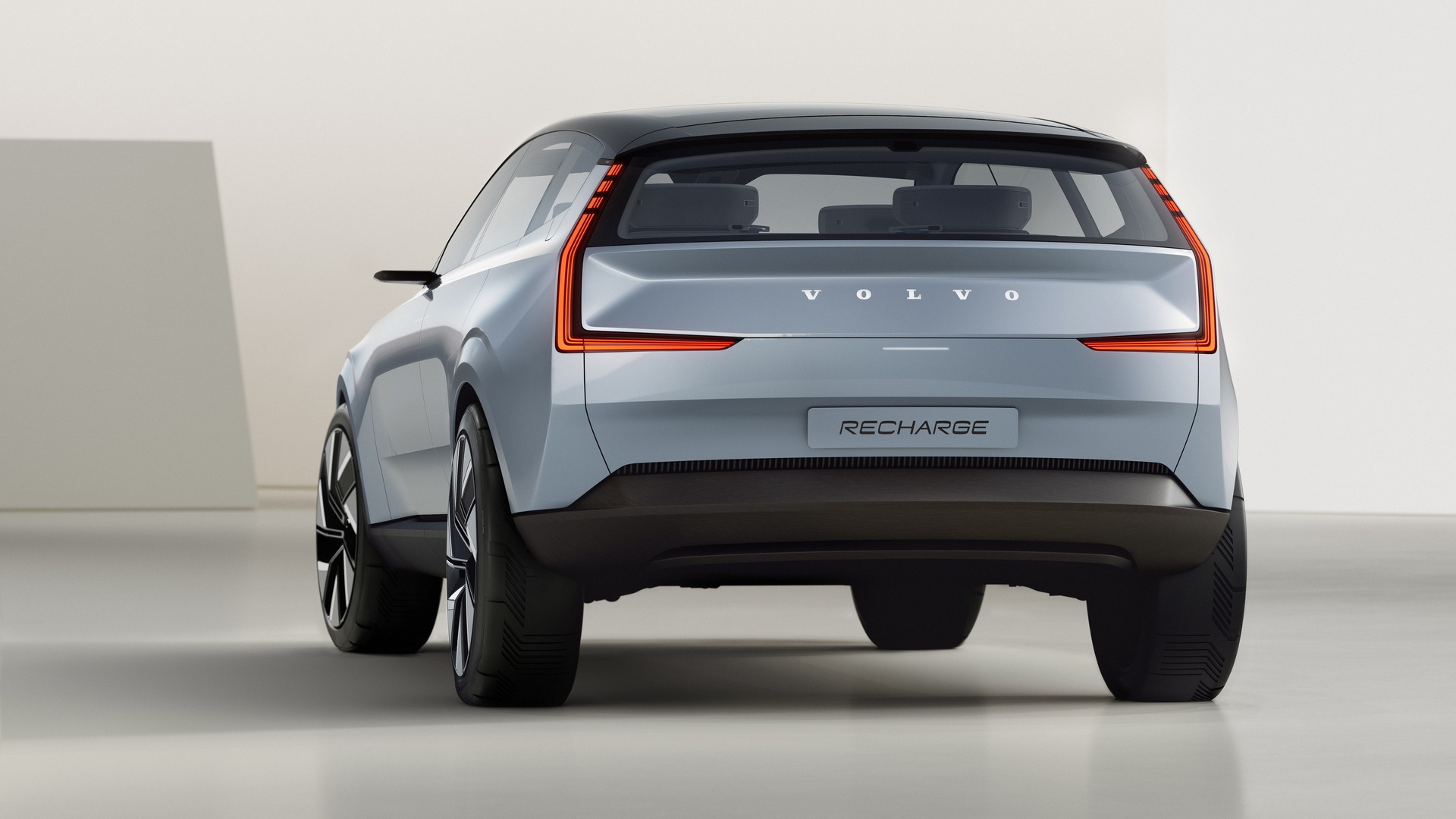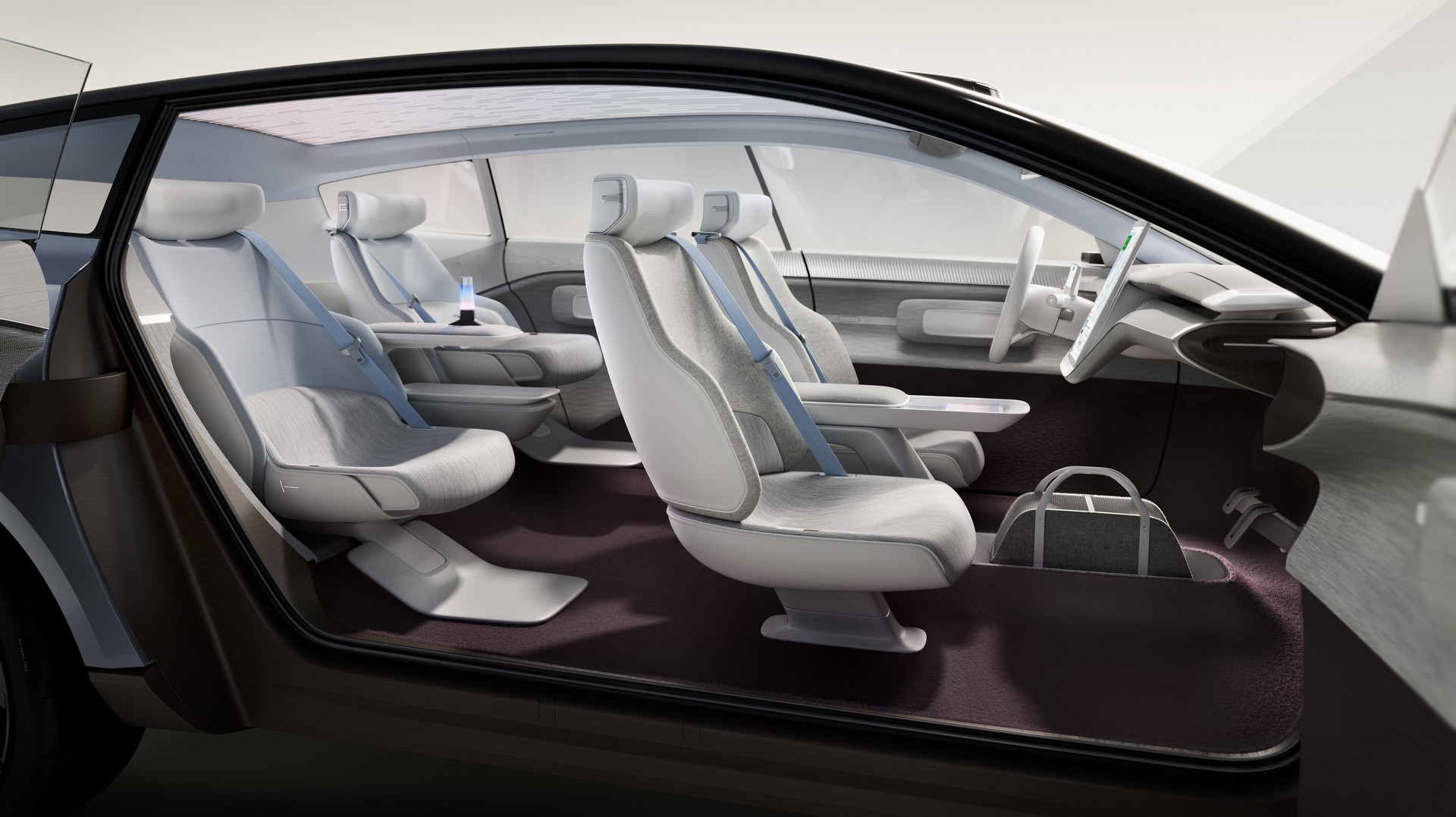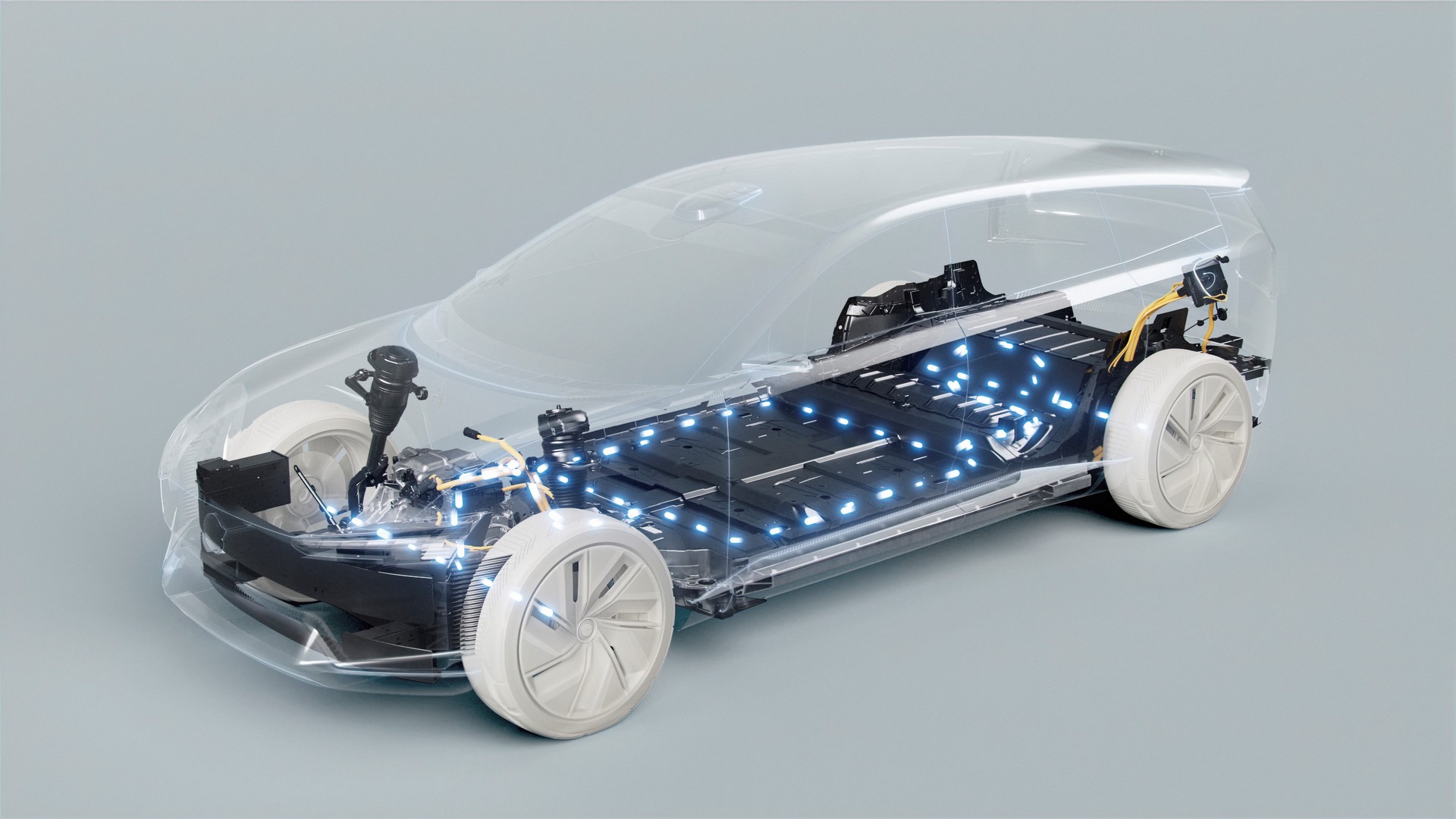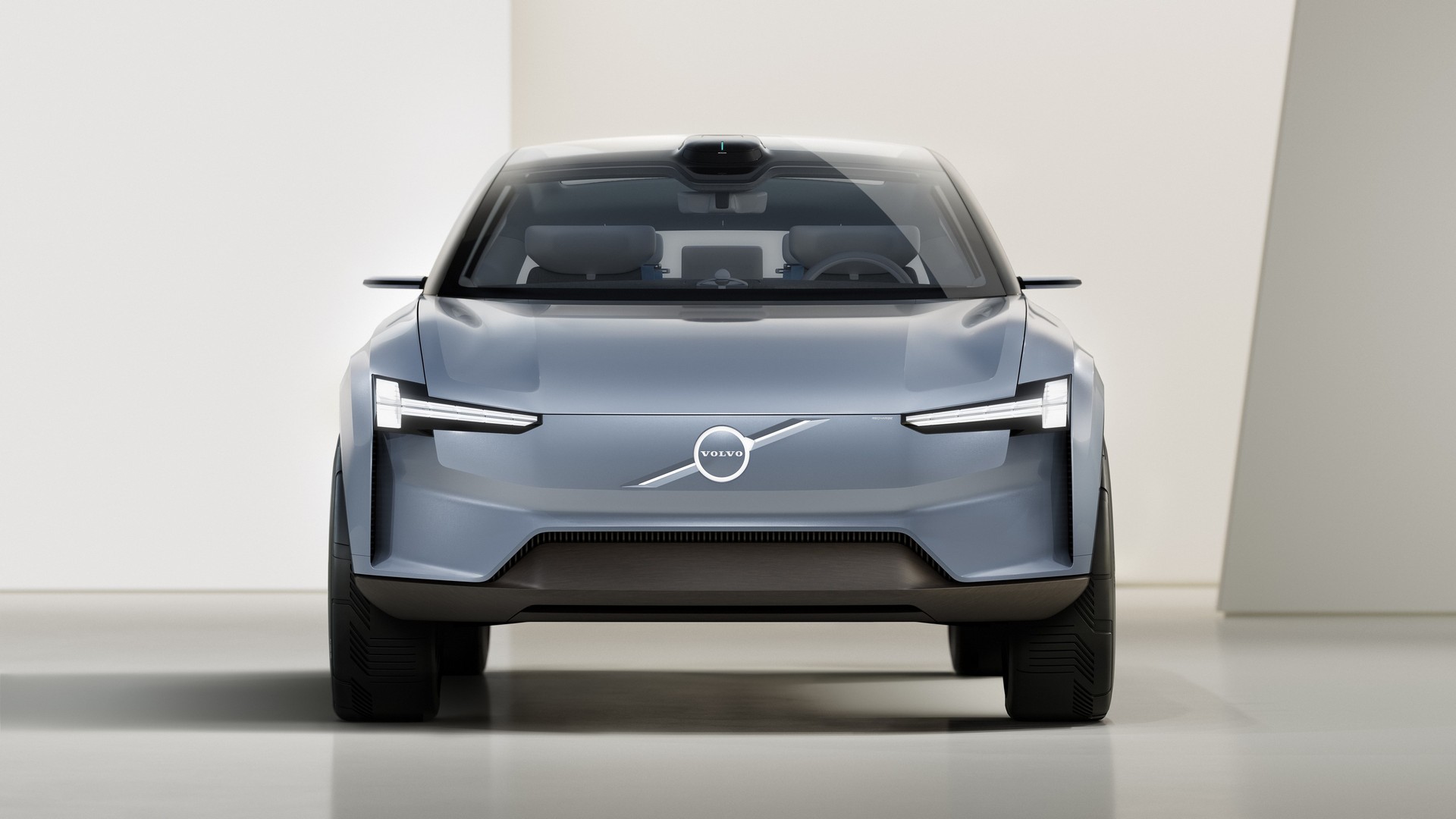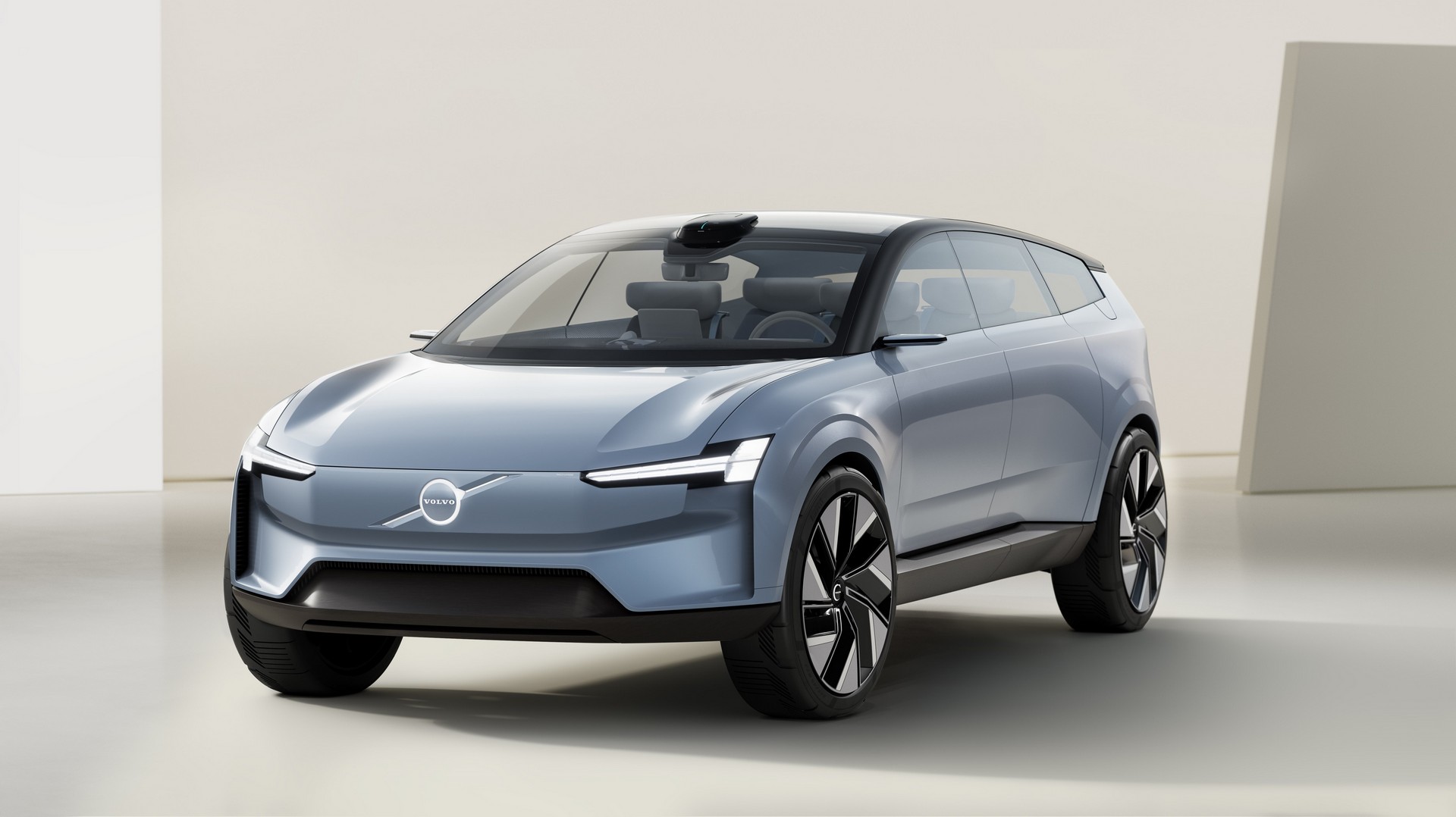Last June, Volvo unveiled the Concept Recharge, a large fully electric SUV that previews the new generation of the XC90. The flagship model from Sweden is expected to debut in 2022 offered in both BEV and ICE-powered variants, with a new report by Autocar shedding more light on its development.
Starting with the design, the third-generation XC90 is expected to closely follow the concept, with a few details being toned down for production. Changes will likely include a more conventional design for the doors and the pillars, similar but less slender LED lights, and smaller-diameter wheels with standard tires.
Read Also: Volvo Says Manufacturing An Electric Car Generates 70 Percent More Emissions Than Its ICE Equivalent
Despite the evolved features, the production model is expected to retain the estate-like proportions that will distinguish it from conventional SUV offerings while paying homage to Volvo’s rich heritage. This strategy will aim at buyers who are fond of estates but also enjoy the higher ground clearance and seating position offered by SUVs.
Robin Page, Volvo’s head of design, described the model as “a new type of vehicle, displaying new and modern proportions that go hand in hand with increased versatility”. Volvo’s CEO, Håkan Samuelsson, had previously admitted that the company is planning on downsizing the current estate range including the V60 / V90, and the equivalent Cross Country variants.
In terms of the interior, the free-standing seats will be likely replaced by a more traditional seating layout offering space for up to seven passengers. However, the “Scandinavian living room feeling” will be retained, with a minimalist design approach and sustainable eco-friendly materials that characterize Volvo’s branding. Like in the concept car, the dashboard will probably feature a large touchscreen incorporating the Google-sourced infotainment. At the same time, great emphasis will be put on safety, in line with Volvo’s vision for zero deaths.
The Volvo XC90 is expected to ride on the SPA2 platform which is an evolved version of the current architecture. The new underpinnings will gradually find their way under most of Volvo’s future offerings starting from the flagship, alongside Geely’s SEA architecture for smaller segments.
While the XC90 will be offered in both ICE-powered and fully electric forms, the platform will be designed to allow for greater interior space compared to previous non-EV-dedicated architectures. The same report adds that the fully electric XC90 will have a different cabin from the hybrid/PHEV XC90 since the lack of an internal combustion engine and transmission tunnel will allow for more passenger space.
Read More: Volvo To Kill Their ICE Offerings By 2030 – New Cars To Be Online-Exclusive Pure EVs
The XC90 Recharge will likely introduce a new generation of the electric powertrain that is currently used on the CMA-based electric models including the XC40 Recharge, C40 Recharge, and Polestar 2. It is also expected to offer standard and long-range variants with different battery capacities, allowing a range of up to 310 miles (500 km).
The Volvo XC90 will also have a more premium and sportier sibling in the form of the Polestar 3 that is expected to debut later in 2022 with a market launch in 2023. This will be exclusively offered in BEV form, and feature only two rows of seats (unlike the XC90 which will come with a three-row option). Naturally, the Polestar 3 will be sold at a higher price than the equivalent Volvo XC90 Recharge.





